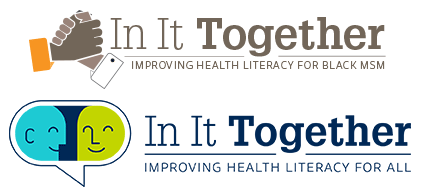Spring Into Action: Review Content, Reduce Jargon, and Set New Goals

Helping support provider efforts to ensure their team members and patients are fully engaged in prevention, decision making, and self-management is important. The Health Resources and Services Administration (HRSA) HIV AIDS Bureau’s In It TogetherExit Disclaimer initiative draws upon the Health Literate Care Model, which holds, when providers make a commitment to health literacy and work towards their goals, they are rewarded with a prepared and proactive care team, and informed, health literate, activated clients. The following tips can help your organization address key health literacy issues and thereby help clients achieve their health and wellness goals:
- Learn the basics of health literacyExit Disclaimer and the importance of being a health literate organization.
- Review the Health Literacy Resource GuideExit Disclaimer to find useful tools and strategies to begin or enhance your efforts to achieve your health literacy goals.
- Be a champion for health literacy. Make efforts to apply the universal precautions approach to health literacy in all of your interactions.
- Recognize that health literacy affects everyone, and a person can experience difficulties during any interaction with a care team member. Thus, every member of the organization should receive training on health literacy. Request a free In It Together health literacy training Exit Disclaimerat your organization.
- Do a quick review of some of your most commonly distributed materials and consider small ways they can be improved, such as adding more whitespace or images.
- Reduce jargon and improve understanding with the “Everyday Words for Public Health Communication” tool provided by the CDC.
- Think digitally. Learn the seven things providers should know about digital health literacy.
- Set specific, measureable, attainable, realistic, and time-bound (SMART) health literacy goals for your organization. Make a plan to ensure you are tracking progress towards these goals throughout the year. Ensure your plan includes asking consumers about their experience.
By taking these steps you will continue to help your clients. For more information on health literacy visit the Health Literacy page on Health.gov